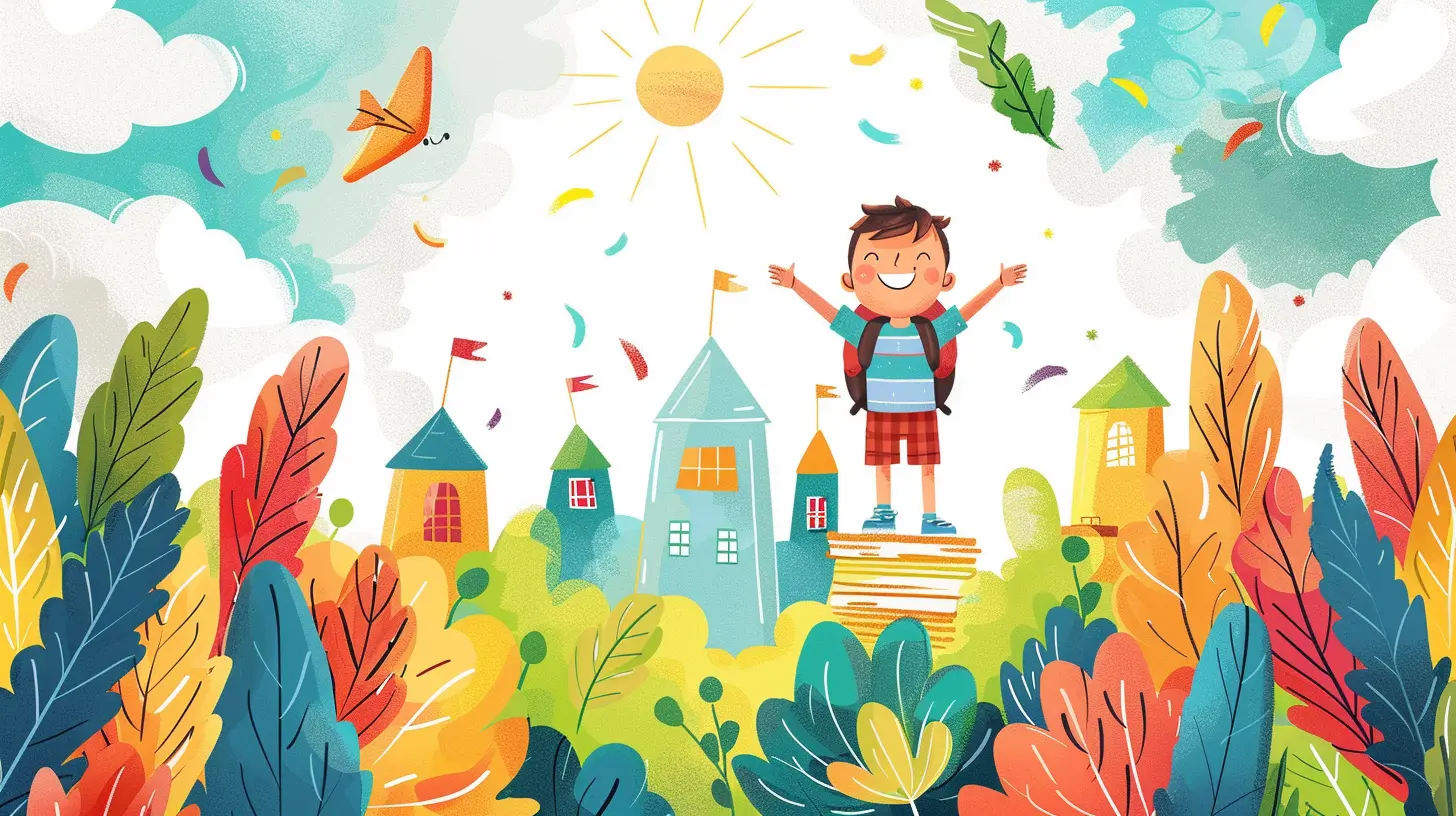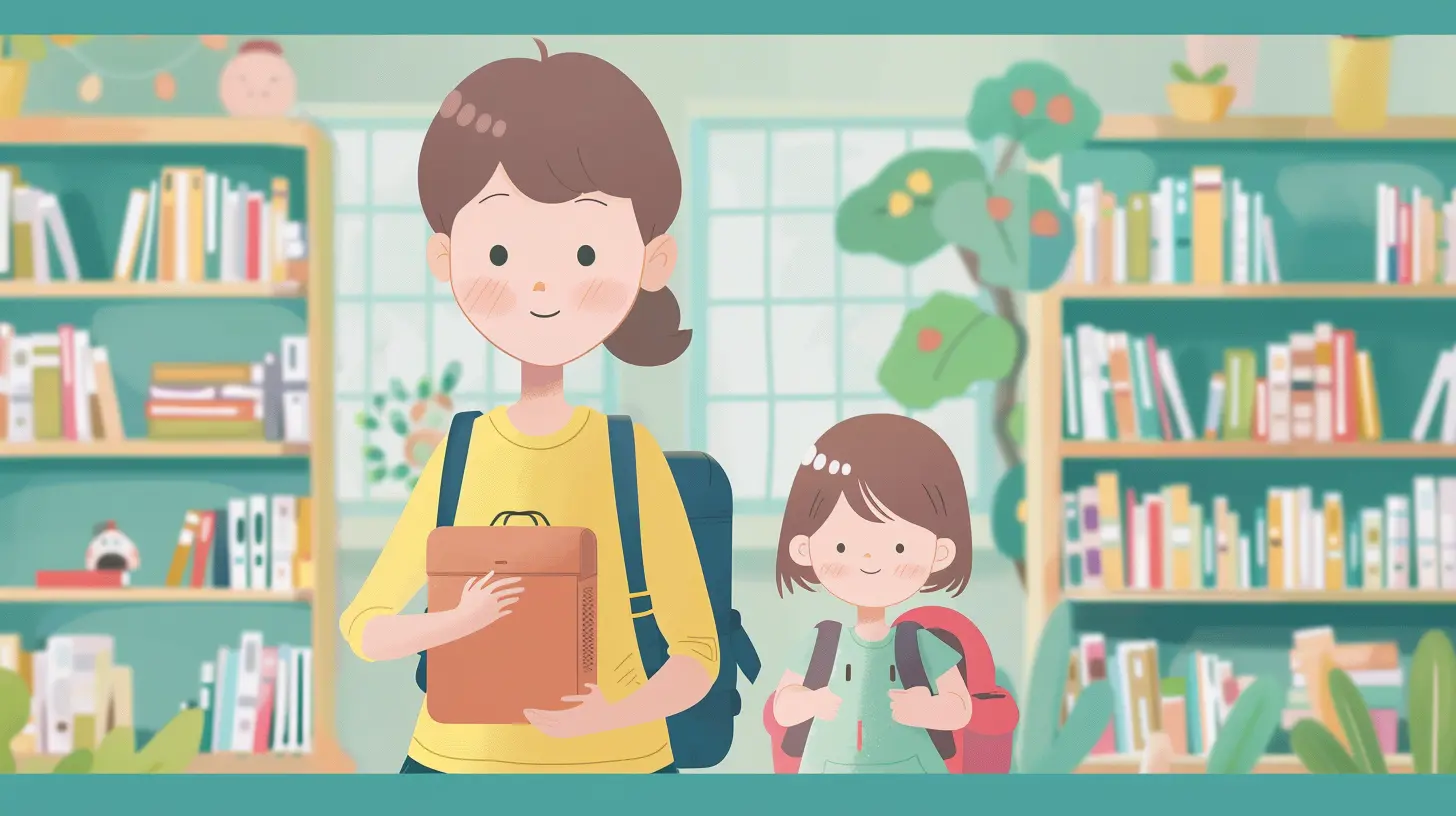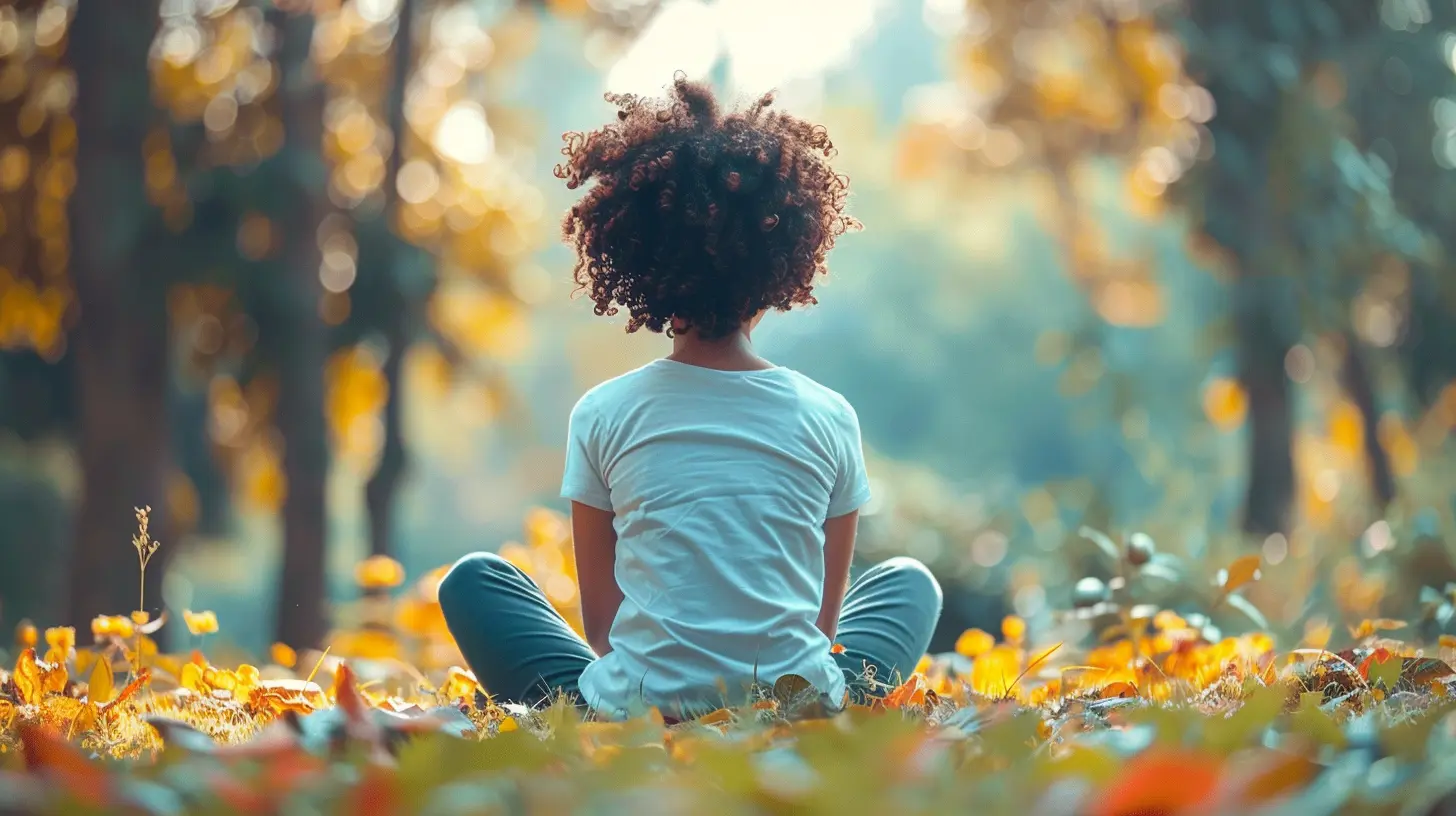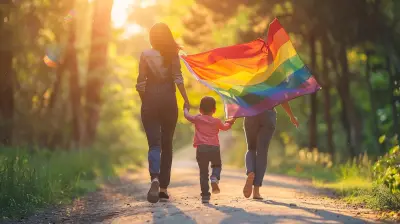Mindfulness Exercises for Kids Transitioning to a New School Year
22 December 2024
It’s that time of year again. Backpacks are stuffed with fresh supplies, alarms are set for way-too-early mornings, and you’re stuck trying to convince your kids that yes, summer really is over. Transitioning to a new school year can be tough—on everyone. If your child seems anxious, overwhelmed, or just plain not ready to leave the comfort of their summer bubble, you’re not alone. This is where mindfulness comes in.
Mindfulness isn’t just some trendy buzzword people throw around; it’s a game-changer. Think of it as a mental reset button. And kids? They so need this. By teaching your kids mindfulness exercises, you’re not only helping them deal with the back-to-school jitters but setting them up with skills they’ll use for life. Ready to jump in? Let’s break this down.
Why Mindfulness is Key for a Smooth School Transition
Before we dive into the exercises, let’s talk about why mindfulness matters during this transition. Starting a new school year isn’t just about learning new math formulas or cramming spelling words. It’s a full-on mental and emotional shift.Kids face new teachers, new classmates, new routines—basically, a whole lot of new. Even the most confident kiddos can feel a little wobbly inside. Mindfulness helps them stay present, manage their emotions, and tackle challenges without spiraling into stress. It’s like giving them a toolbox with all the right tools to handle change.
Plus, research has our backs on this. Studies show mindfulness improves focus, reduces anxiety, and helps with emotional regulation. So yeah, it’s worth it.
Mindfulness Exercises to Help Kids Navigate the New School Year
Here’s the good stuff: practical, simple mindfulness exercises your kids can actually do without rolling their eyes or groaning. (Because let’s face it, if they’re not on board, it’s not happening.) These exercises are fun, effective, and child-approved.1. The "Backpack Check-In"
Think of this as a morning mindfulness ritual for busy school days. Before your child grabs their bag and heads out the door, take a moment to "check in."- How it works: Have them close their eyes, take three deep breaths, and ask themselves, "How do I feel right now?" Are they excited? Nervous? Sleepy? Just acknowledging their feelings can make a huge difference.
- Why it helps: It sets the tone for the day and gets them more in touch with their emotions. Bonus? This literally takes less than a minute.
2. The Breathing Balloon
If your kid’s feeling a bit anxious about school (or, let’s be real, life in general), this one’s a lifesaver.- How it works: Have them imagine their belly is a balloon. As they inhale deeply through their nose, their "balloon" fills up and expands. Then, as they exhale through their mouth, the balloon deflates. Repeat this for a few breaths.
- Why it helps: Deep breathing calms the nervous system and helps kids feel grounded. Plus, pretending their belly is a balloon? Kinda fun.
3. Gratitude Journaling (Quick-Style!)
Gratitude is like the superhero of mindfulness practices. And nope, they don’t need a fancy journal for this one.- How it works: Ask your kid to list three things they’re grateful for each day. It could be as simple as, "I’m thankful for recess, pizza, and my dog."
- Why it helps: Shifting focus to the positives can ease first-day jitters and help them develop a more optimistic outlook.
4. The Five Senses Scan
This exercise is great for redirecting a scattered or anxious mind. Think of it as a mental scavenger hunt.- How it works: Wherever they are—on the bus, at the breakfast table, or waiting in the school hallway—ask them to notice:
1. Five things they can see.
2. Four things they can feel.
3. Three things they can hear.
4. Two things they can smell.
5. One thing they can taste.
- Why it helps: It’s simple, quick, and brings their attention to the present moment rather than worrying about what’s next.
5. "Worry Clouds" Visualization
For kids with big worries about school, this one’s a winner.- How it works: Tell them to close their eyes and imagine their worries as fluffy clouds floating in the sky. Ask them to watch the clouds drift away, taking their worries with them.
- Why it helps: Visualizing worries floating away creates a sense of detachment. It’s like saying, "Bye, stress! Don’t let the door hit you on the way out."

Creating a Mindfulness Routine That Sticks
Okay, so you’ve got a handful of cool exercises. Now let’s talk about making them a regular part of your kid’s life. Because let’s face it—if it’s not a habit, it’s all too easy to forget.Start Small
You don’t need to pull out the yoga mats and dedicate an hour every day to mindfulness. Start with just one exercise and build from there. Maybe it’s a quick morning check-in or a bedtime gratitude session. Keep it simple.Make it Fun
If an exercise feels like a chore, your kid’s not going to do it. Turn mindfulness into a game, add silly elements, or do the exercises with them. (Yes, even you could use some mindfulness, Mom and Dad.)Consistency is Key
Pick a consistent time of day for mindfulness practices. Whether it’s before school, at bedtime, or even in the car ride to school, creating a routine makes it easier to stick with.
Common Challenges (And How to Smash Them)
Let’s be real: Sometimes kids just don’t want to do the thing. Resistance is normal. Here are some common roadblocks and how to tackle them."This is boring"
Kids have the attention span of a goldfish. If they’re over it, try switching exercises or shortening the time. Keep it fresh."I don’t have time"
We get it—school mornings can be pure chaos. Look for bite-sized mindfulness exercises that only take a minute or two. The Backpack Check-In is perfect for this."I feel silly"
If your kid’s feeling awkward, remind them that mindfulness isn’t about doing something "right" or "wrong." It’s just about being present. And hey, if they’re laughing, that’s still a stress-buster.How Parents Can Encourage Mindfulness
Want to really drive mindfulness home? Lead by example. Kids mirror what they see, so if you’re staying calm, present, and mindful, they’ll follow suit. Plus, practicing mindfulness together strengthens your bond. Win-win.Some ideas:
- Try the exercises yourself and share your experience.
- Have family mindfulness time. (Yes, even the dog can join.)
- Celebrate their progress. Even if they only manage one deep breath, it’s a win.
Final Thoughts
Transitioning to a new school year doesn’t have to be the emotional rollercoaster it sometimes feels like. With a little mindfulness, your child can tackle challenges, feel more confident, and approach this new chapter with a calmer mind. You’ve got this, and so do they.Remember, mindfulness isn’t about being perfect—it’s about being present. Start small, have fun, and watch as these exercises work their quiet magic.
all images in this post were generated using AI tools
Category:
Back To School TipsAuthor:

Karen Hurst
Discussion
rate this article
14 comments
Tala McNulty
This article highlights the importance of mindfulness in easing children’s transition to a new school year, yet it could delve deeper into specific exercises tailored to different age groups. Including real-life examples or testimonials could enhance relatability and practical application, making these strategies even more effective for parents navigating this challenge.
February 2, 2025 at 5:24 AM

Karen Hurst
Thank you for your insightful feedback! I appreciate your suggestions for including age-specific exercises and real-life examples. I will consider these elements for future revisions to enhance the article's practical application for parents.
Arwen Fisher
Embracing mindfulness can empower children to navigate the changes of a new school year with confidence. Simple exercises not only enhance their emotional resilience but also foster a sense of belonging. Encouraging these practices can create a positive and supportive environment for growth.
January 30, 2025 at 3:47 PM

Karen Hurst
Thank you for your insightful comment! I completely agree—mindfulness not only builds resilience but also helps children feel connected and supported during transitions.
Maura McKinnon
Embrace this new journey! Mindfulness can empower your kids to thrive and find joy in change!
January 27, 2025 at 3:45 AM

Karen Hurst
Thank you! Absolutely, mindfulness is a powerful tool that can help children navigate change with confidence and joy.
Astralis Porter
Thank you for sharing these mindfulness exercises! They’re a wonderful way to support our kids during this transitional time. Much appreciated!
January 23, 2025 at 4:10 AM

Karen Hurst
You're very welcome! I'm glad you found the exercises helpful for your kids. Wishing you all a smooth transition!
Lorna Pruitt
This article is a fantastic resource for helping our kids navigate the challenges of a new school year! Mindfulness exercises can provide them with the tools to manage anxiety and foster resilience. Embracing these practices can create a positive mindset, setting the stage for a successful and fulfilling school experience. Thank you for sharing!
January 20, 2025 at 4:28 PM

Karen Hurst
Thank you for your kind words! I'm glad you found the article helpful for supporting kids during this transition. Mindfulness can truly make a positive impact!
Jocelyn McGillivray
This article offers excellent mindfulness exercises to help children navigate the challenges of starting a new school year. Incorporating these techniques not only eases anxiety but also fosters emotional resilience and focus, promoting a smooth transition.
January 16, 2025 at 4:29 PM

Karen Hurst
Thank you for your thoughtful comment! I'm glad you found the mindfulness exercises helpful for easing anxiety and promoting resilience in children during this transition.
Mallory Sanchez
Love these tips! Mindfulness makes back-to-school fun and exciting for kids! 🌟
January 10, 2025 at 5:47 AM

Karen Hurst
Thank you! I'm glad you found the tips helpful—mindfulness can truly transform the back-to-school experience! 🌟
Vivian Adams
Thank you for sharing these wonderful mindfulness exercises! They are a fantastic way to help children transition smoothly into the new school year. I can't wait to try them with my kids!
January 4, 2025 at 5:32 PM

Karen Hurst
You're very welcome! I'm glad you find them helpful—enjoy trying them with your kids!
Katalina Moore
Great tips! Mindfulness can really ease their transition.
December 31, 2024 at 4:57 PM

Karen Hurst
Thank you! I'm glad you found the tips helpful. Mindfulness can truly make a big difference during transitions!
Lyla Sharpe
Mindfulness is essential for kids facing new challenges. These exercises empower them to build resilience and navigate change, setting a positive tone for the school year ahead!
December 27, 2024 at 3:43 PM

Karen Hurst
Thank you! I'm glad you see the value of mindfulness in helping kids build resilience during transitions. It's crucial for their well-being!
Tia McConnell
Great tips! Embracing mindfulness can truly make the back-to-school transition smoother for our little ones. Remember, a little deep breathing and positive thinking can go a long way. Let’s support them in discovering new adventures with confidence and joy! 🌟
December 25, 2024 at 5:59 PM

Karen Hurst
Thank you! I completely agree—mindfulness is key for a positive transition. Let’s continue to encourage our kids as they embrace new challenges! 🌈
Declan Diaz
Embracing mindfulness can transform your child's back-to-school experience! These exercises not only ease transitions but also build resilience. Let’s empower our kids to shine in this new journey!
December 23, 2024 at 5:25 AM

Karen Hurst
Thank you for your insightful comment! Mindfulness truly plays a vital role in helping children navigate transitions and thrive in their school journey.
Solstice Stevens
Mindfulness is a powerful tool for kids facing new school challenges. Encouraging these exercises fosters resilience and adaptability, empowering our children to thrive in their new environments. Let's embrace this journey!
December 22, 2024 at 5:22 PM

Karen Hurst
Thank you for highlighting the importance of mindfulness! It truly equips children with valuable skills to navigate new challenges and thrive. Let's continue to support their journey!
Honor Sweeney
Mindfulness? I’m just trying to keep us all from chaos!
December 22, 2024 at 3:57 AM

Karen Hurst
I understand! Mindfulness can actually help bring calm and focus during chaotic times. It’s all about finding balance!
MORE POSTS

Tackling Sibling Jealousy Without Playing Favorites

Managing Different Family Cultures in a Co-Parenting Situation

LGBTQ+ Adoption: Overcoming Challenges and Embracing Diversity in Parenting

Essential Time Management Tools Every Parent Should Know About

The Secret to Time Management Lies in Your Evening Routine

How to Use Rewards Systems to Encourage Less Screen Time

Master the Morning: How a Good Start Changes Your Whole Day

The Role of Cultural Traditions in Raising an Adopted Child

How to Choose the Best Maternity Clothes for Comfort and Style